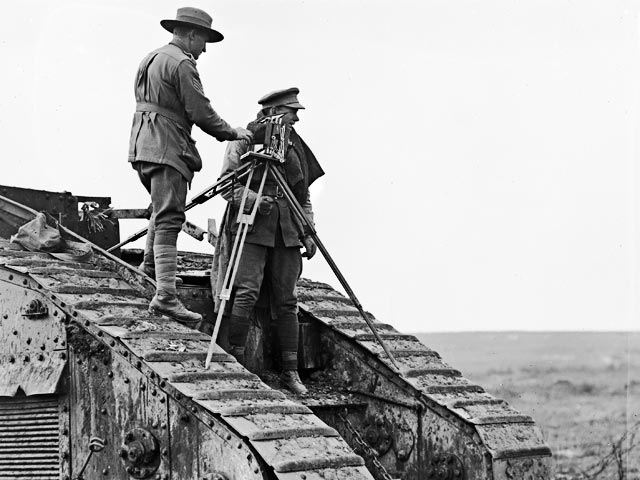Photographers during WWI had a great task ahead of them. They had to document the horrors of war, along with the few lighter moments. They had to be present in and out of trenches. Above all, they had to survive while setting up camera stands and snapping pictures, efforts which could not be achieved with a gun in their hands. WWI photographers were expected to treat their jobs with equal amounts of bravery and finesse. Given the large amounts of war photos still preserved today, it would appear that the bulk of them succeeded.
It is important to remember that WWI was a time of military innovation. Aside from gunfire, these men had to brave threats of tanks and mustard gas to provide photographic evidence of what devastation such weapons caused. Photographers on naval expeditions had to worry about covert U-boats attacking their ships with torpedoes, and there were always threats of air raids on the many photoreconnaissance missions performed during the war.
Newspapers carried scenes from the war effort to civilians back home, and they could not have done so as accurately without their photographers on staff. Aside from the earliest tanks and the horrific results of gas attacks, they took pictures of several key WWI landmarks such as No Man’s Land outside of Germany and the Somme.
Tanks and mustard gas were not the only safety threats involved. More standard weaponry was also still at play during WWI, including tear gas and artillery. Since the photographers on the battlefield lacked in military training, many of them could not tell the difference between two kinds of shells at first glance, leading to injuries that may have been avoided (or at least lessened). At least one journalist left the war suffering chronic chest pains as a result of being gas, whereas some others never left the war at all due to artillery, the Mirror News reports.
These WWI photographers met with great fortune in that the vast majority of them avoided capture, despite the fact that their film could have been incredibly useful to the enemy. Enemy forces would have been able to either gain insight into the scenes behind enemy lines, or prevented reconnaissance pictures from getting back to the Allies. Many people are amazed today to see, in the wake of the WWI centenary, just how much of the was captured in terms of both dark and light moments, from military lifestyles to civilian ones. The photographers of the era were truly dedicated, and it is today’s generation which gets to benefit from the work they put in.
